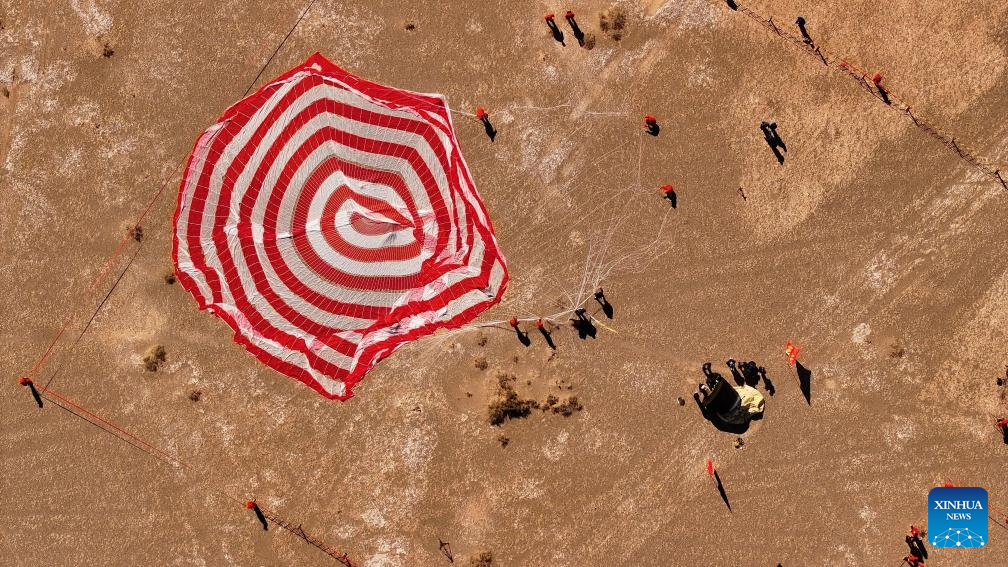
 0 Comment(s)
0 Comment(s) Print
Print E-mail China Daily, October 12, 2024
E-mail China Daily, October 12, 2024
China successfully retrieved its first reusable and returnable test satellite, Shijian-19, at the Dongfeng landing site in north China's Inner Mongolia Autonomous Region at 10:39 a.m. (Beijing Time), Oct. 11, 2024, said the China National Space Administration (CNSA). [Photo/Xinhua]
China's first reusable satellite returned to Earth on Friday morning and was recovered at its predetermined landing site in the Inner Mongolia autonomous region, according to the China National Space Administration.
The administration said in a news release that the Shijian 19 satellite touched down at the Dongfeng Landing Site at 10:39 am and was then opened by ground recovery personnel sent by the Jiuquan Satellite Launch Center to take out mission payloads.
There were plant seeds, microorganism samples, technology demonstration devices, space experimental instruments as well as cultural items placed inside the satellite. Moreover, the Shijian 19 carried science payloads from five nations, including Thailand and Pakistan, according to the administration.
The spacecraft was taken into space by a Long March 2D carrier rocket that lifted off from the Jiuquan spaceport on Sept 27.
Developed by the China Academy of Space Technology in Beijing, Shijian 19 was tasked with servicing space-based mutation breeding programs and carrying out flight tests for the research of domestically developed materials and electronic components.
According to the administration, the satellite features a high level of microgravity inside its body and a large carrying capacity. It is a good platform for high-microgravity experiments and its service will facilitate studies in microgravity physics and life science.
China launched its first recoverable satellite in 1975, becoming the third nation, after the United States and the former Soviet Union, to have such a spacecraft.
The country has launched nearly 30 such spacecraft since then. These satellites have enabled Chinese scientists to carry out hundreds of space-based tests and experiments. However, none of them could be reused, which means they would retire as soon as their payloads were taken out.
The microgravity inside spacecraft has proved to be beneficial to many scientific experiments, and recoverable satellites are the most suitable carrier for such experiments.
Wang Yanan, chief editor of Aerospace Knowledge magazine, said that reusable satellites can complement China's Tiangong space station when it comes to conducting space-based experiments and tests.
"Due to the rapid advances in China's science and technology, we have witnessed an increasing number of scientific experiments and technological tests waiting to be taken into orbit. And that means you could either wait in a long line for an opportunity (for a payload to be carried) onboard the space station or wait for an unpredictable period of time for a place on the next recoverable satellite.
"Now, with the service of the new reusable satellite, researchers will have more opportunities to send their experiments or tests into space, and this new platform promises shorter waits and lower costs, which will definitely be attractive," he said.
Go to Forum >>0 Comment(s)